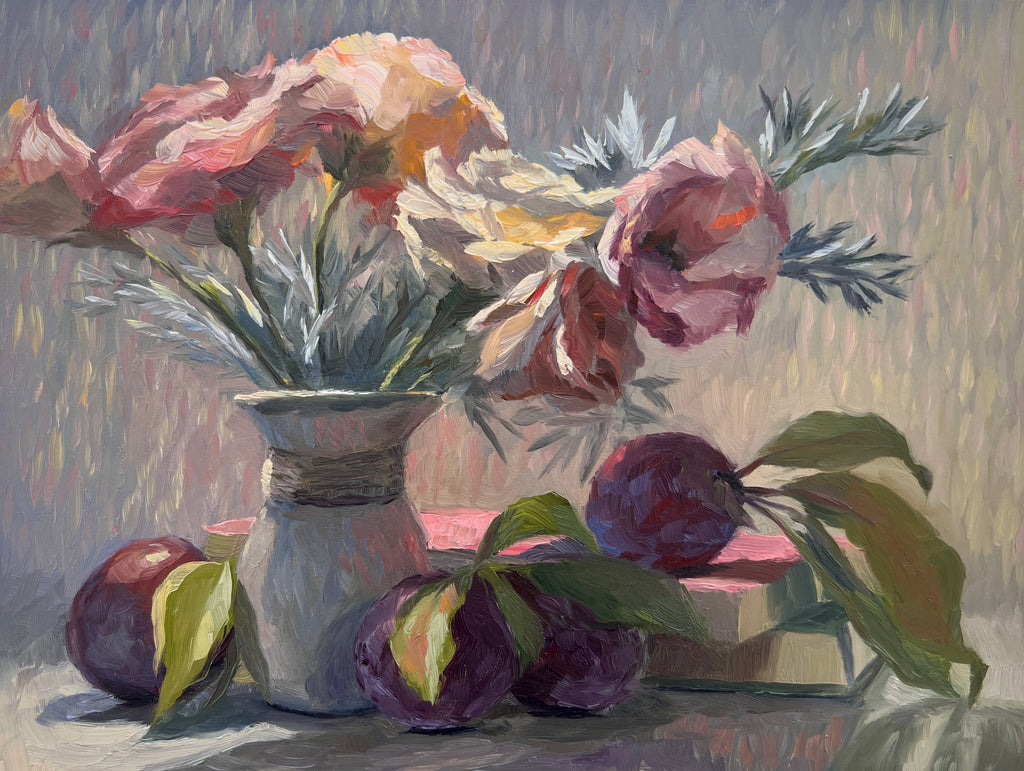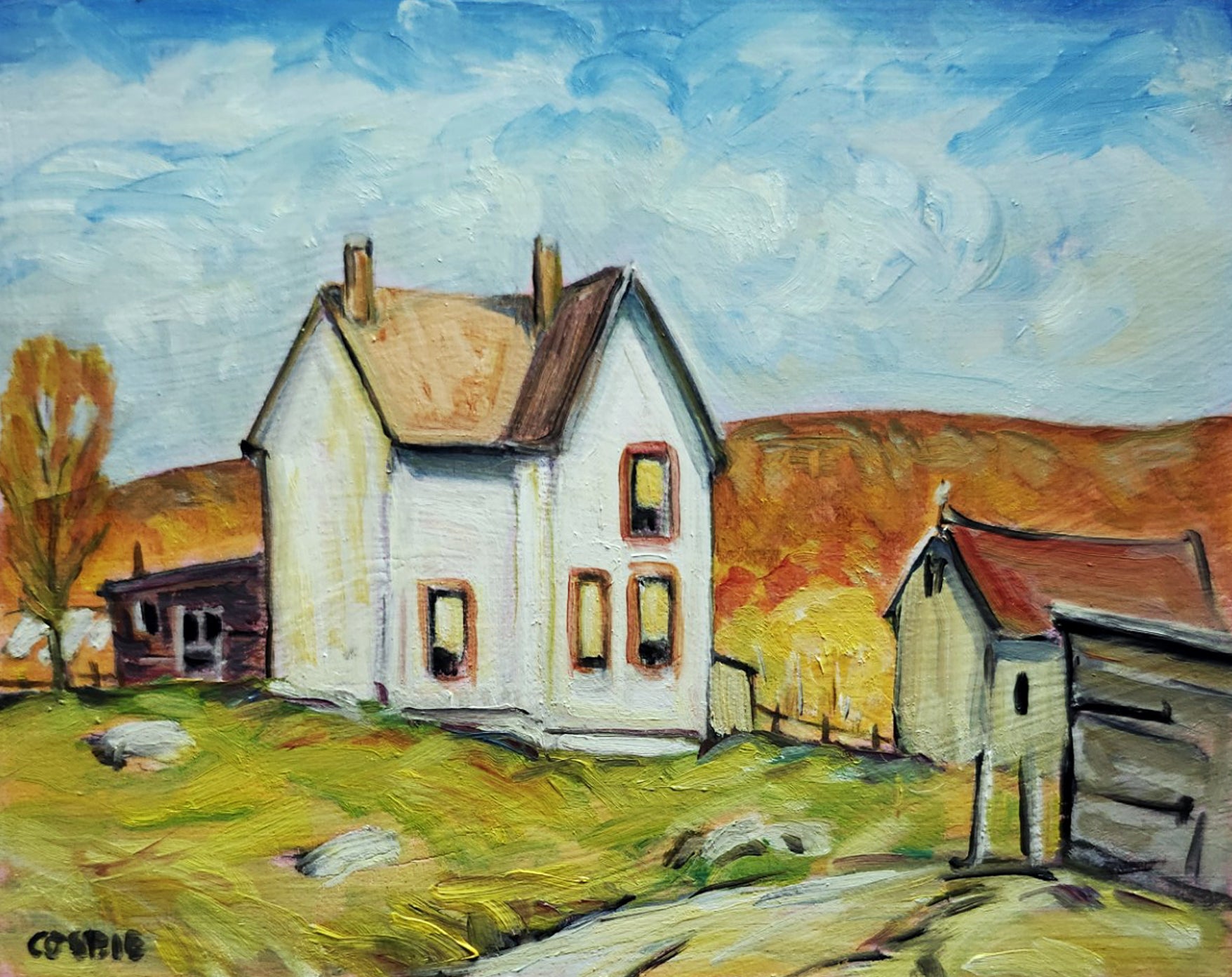Artist-Made Masterpieces: Oil Paintings for Sale by Artists
Artist-Made Masterpieces: Oil Paintings for Sale by Artists
Blog Article
Checking out Everything About Oil Paints: An Overview to Understanding Their Appeal and Worth
Oil paintings have actually mesmerized target markets for centuries, providing a peek right into the artistic mastery of various eras. Their abundant background is linked with cutting-edge strategies and profound emotional expression. Understanding the products and techniques behind these artworks can improve recognition. Furthermore, the market for oil paintings offers chances for enthusiasts and financiers alike. As one explores this fascinating globe, the concern occurs: what makes an oil paint genuinely beneficial?
The Background of Oil Painting: A Journey With Time
Although oil painting has origins that date back to ancient times, it absolutely grew during the Renaissance, when artists found its flexibility and abundant color potential. Early examples can be traced to the 7th century, with techniques advancing significantly across cultures. The medium ended up being famous in Northern Europe in the 15th century, especially via the works of musicians like Jan van Eyck, that pioneered its usage for thorough realism and lively tones. This period marked a separation from tempera paints, allowing for higher deepness and texture. As oil paint spread, it affected countless artists, bring about masterpieces by distinguished numbers such as Leonardo da Vinci and Rembrandt. The tool's legacy continues, forming the art globe well into contemporary times.
Recognizing Oil Repaints: Materials and Techniques
As musicians discover the globe of oil paints, they experience a varied selection of products and strategies that specify this medium. The primary components of oil paint consist of pigments, which provide color, and drying out oils, such as linseed, that bind the pigments and promote application. Numerous ingredients can change the paint's appearance and drying out time, boosting flexibility. Strategies like glazing, where clear layers are accumulated, and impasto, which involves applying thick paint, permit various aesthetic effects. Additionally, using brushes, combination knives, and even fingers can develop special textures and surfaces. Comprehending these materials and techniques makes it possible for musicians to fully share their creativity and attain the desired impact in their art work.
The Function of Shade in Oil Paints
Shade plays a crucial duty in oil paintings, affecting both aesthetic appeal and psychological vibration. Understanding color concept essentials, consisting of the relationships in between colors, can improve an artist's capacity to share mood and atmosphere. In addition, grasping color blending methods enables better depth and splendor in a painting's combination.

Shade Concept Basics
Recognizing color theory is essential for artists dealing with oil paints, as it forms the foundation for creating aesthetically engaging and harmonious structures. Color theory incorporates the research of just how colors connect, the color wheel, and the relationships between primary, secondary, and tertiary colors. Musicians use corresponding shades to improve contrasts and produce focal factors, while analogous shades advertise unity and cohesiveness within an item. Furthermore, the ideas of amazing and warm colors affect the perception of deepness and space in a paint. Understanding these concepts allows artists to adjust color properly, directing the viewer's eye and interacting their desired message. Mastery of shade theory inevitably enriches an artist's capacity to convey emotions and ideas via their job.
Emotional Impact of Color
The emotional effect of shade in oil paintings plays an essential function in just how viewers view and attach with artwork. Colors stimulate specific feelings and moods, affecting the viewer's psychological state. Warm colors like oranges and reds can develop a feeling of heat and energy, while great tones such as blues and environment-friendlies frequently evoke peace or introspection. Artists strategically pick shade schemes to boost narrative components, leading the target market's psychological journey. The saturation and contrast of colors additionally intensify these results, drawing focus and creating emphasis. Eventually, the interaction of colors in oil paintings not just enhances their aesthetic appeal yet additionally acts as a powerful medium for psychological expression, improving the viewer's experience and interpretation.
Color Combining Techniques
While lots of aspects of oil painting contribute to the overall structure, mastering shade blending methods is crucial for attaining wanted results and deepness. Shade mixing can be approached through various methods, consisting of the additive and subtractive procedures. Additive blending entails incorporating shades of light, while subtractive mixing depends on pigments, where shades blend to produce new shades. Artists typically use a limited scheme to produce harmonious jobs, comprehending the connections between primary, additional, and tertiary colors. Methods such as glazing and scumbling even more improve deepness and brightness. By skillfully blending colors, an artist can stimulate emotions, develop prime focus, and accomplish a sense of realistic look, eventually raising the painting's emotional and aesthetic impact.
Famous Oil Painters and Their Iconic Functions

Famed for their proficiency of color and strategy, oil painters have actually produced a few of the most well known art work in background. Distinguished artists like Vincent van Gogh captivated target markets with his stirring brushwork in "Starry Evening," while Claude Monet's "Impact, Dawn" prepared for Impressionism. Leonardo da Vinci's "Mona Lisa" remains a long-lasting sign of artistic brilliant, showcasing his ability in catching human expression. At the same time, Rembrandt's "The Evening Watch" shows his ingenious use of light and shadow. Other noteworthy figures include Pablo Picasso, who changed modern art with his bold trial and error in works like "Les Demoiselles d'Avignon," and Georgia O'Keeffe, whose dynamic depictions of landscapes and flowers aided define American modernism. Each artist's one-of-a-kind design added significantly to the oil paint landscape.
How to Assess the Top Quality of an Oil Painting
Assessing the quality of an oil paint includes a careful analysis of workmanship techniques, as well as an evaluation of shade and composition. Observing brushwork, layering, and the application of paint can disclose the musician's skill degree. Furthermore, the interaction of colors and the total plan of aspects add considerably to the painting's visual value.
Evaluating Workmanship Techniques
A precise assessment of craftsmanship strategies is necessary for establishing the high quality of an oil painting. Critics need to first take a look at the application of paint; thick, textured brushstrokes may recommend a knowledgeable hand, while extremely consistent applications could show an absence of deepness. oil paintings for sale. The layering strategy is likewise vital; the existence of glazes and differed density can boost luminance and complexity. Furthermore, the top quality of the products used, such as the canvas and pigments, plays a considerable function in durability and general aesthetic. Focus to detail in components like edges and changes between shades reflects the musician's commitment to their craft. Eventually, these methods add to the painting's psychological effect and market worth, offering as indicators of the artist's ability and intent
Evaluating Shade and Make-up
While examining the top quality of an oil paint, one should focus on the interaction of color and composition, as these aspects are basic to the artwork's total influence. Shade choices can establish and evoke feelings state of mind; as a result, the musician's combination must be examined for harmony and contrast. A well-balanced composition directs the viewer's eye and creates a sense of unity. Artists frequently use strategies like the guideline of thirds or leading lines to boost aesthetic passion. Additionally, making use of light and shadow can add depth, enhancing the three-dimensionality of the paint. Eventually, a successful oil painting weds color and make-up, involving the viewer and welcoming a much deeper admiration of the musician's vision and strategy.
Caring for and Preserving Oil Paintings
Correct care and conservation of oil paints is important for maintaining their honesty and longevity. To secure these artworks, it is crucial to show them away from straight sunlight, which can trigger fading and discoloration. Preserving a steady setting with regulated temperature and humidity additional aids in stopping damages. Cleaning need to be done carefully making use of a soft, completely dry towel, preventing any rough chemicals that can damage the paint or varnish. Regular assessments for indicators of damage, such as flaking or cracking, are suggested. When transferring or saving oil paints, proper cushioning and framework are necessary to prevent physical damage. Ultimately, persistent care adds to the aesthetic appeal and worth of oil paintings over time.
The Marketplace for Oil Paints: Collecting and Spending
Understanding the marketplace dynamics for oil paints is essential for investors and collection agencies alike. The worth of these artworks is influenced by numerous elements, consisting of the musician's reputation, historical relevance, and existing trends. Collection agencies usually seek pieces that resonate directly while thinking about prospective gratitude in worth. Auctions and galleries work as key locations for trading, with costs rising and fall based upon need and rarity. Purchasing oil paintings requires study into the marketplace, as well as an understanding of credibility and provenance. Additionally, arising artists may offer chances for significant returns, while developed names can command high rates. In general, a tactical strategy to collecting can produce both visual enjoyment and financial incentives.

Frequently Asked Concerns
What Are the Environmental Effects of Oil Painting Materials?
The environmental influences of oil paint products consist of the launch of unstable natural substances (VOCs), dangerous waste generation, and source extraction for pigments. These elements add to pollution and environmental deterioration, increasing problems amongst eco aware musicians and customers.
Just How Do Various Canvases Influence Oil Paint Outcomes?
Different canvases influence oil painting results significantly. Surface, absorbency, and structure top quality can alter paint application, drying times, and shade vibrancy. Musicians usually select details canvases to achieve preferred impacts and boost their artistic expression.
Can Oil Paintings Be Restored if Damaged?
If damaged, Oil paints can without a doubt be restored. Expert conservators here make use of various techniques to repair splits, clean surfaces, and address staining, ensuring that the artwork keeps its original charm and value for future generations.
What Are the Indications of an Initial Oil Paint?
The indicators of an original oil painting consist of visible brush strokes, appearance variations, and an irregular canvas weave (oil paintings for sale). Furthermore, authenticity might be confirmed via provenance, signatures, and the visibility of a varnish layer special to oil mediums
Exactly How Has Technology Influenced Modern Oil Painting Techniques?
Innovation has considerably affected modern oil paint methods by presenting electronic devices for planning, boosted products for texture and durability, and online platforms for marketing and sharing art, thus increasing artists' imaginative possibilities and audience get to. Oil painting has origins that date back to old times, it truly grew during the Renaissance, when artists uncovered its flexibility and abundant shade potential. The emotional influence of shade in oil paints plays an essential duty in how audiences link and view with art work. While many facets of oil painting contribute to the general make-up, mastering color mixing methods is essential for accomplishing preferred results and depth. Examining the top quality of an oil paint entails a careful assessment of craftsmanship methods, as well as an evaluation of shade and make-up. While evaluating the quality of an oil painting, one have to focus on the interaction of color and make-up, as these elements are fundamental to the art work's overall influence.
Report this page